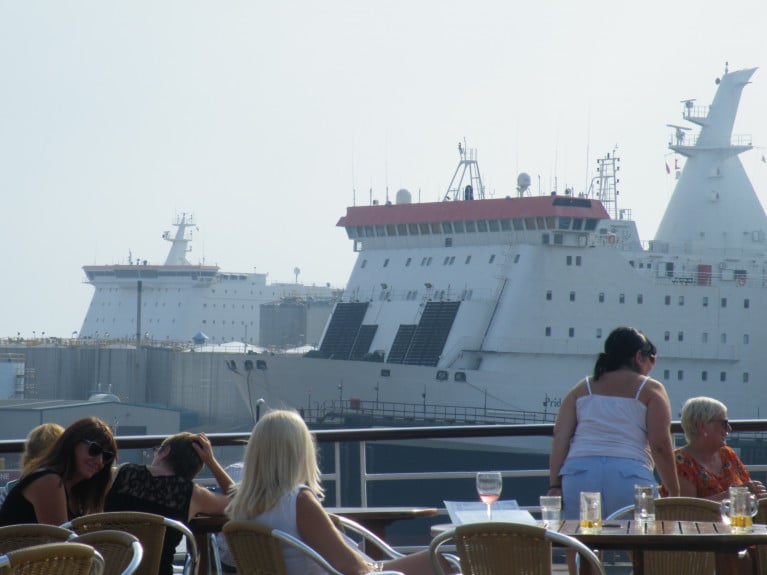A P&O Ferries ropax on the Dublin-Liverpool route, Afloat highlights, the Norbay is at A&P’s Tyne dry-dock facility at Hebburn near Newcastle on the North Sea where the 1992 built ferry first entered service until transferred a decade later onto the Irish Sea.
On a related note P&O's Hull-Zeebrugge route, reports Hull Live, of ferry passengers been left confused after the firm announced the Pride of Bruges cruise ferry would "temporarily" be back in service.
The ferry - which travels between Hull and Zeebrugge in Belgium - was "laid up" alongside the Pride of York, which sailed the same route when P&O Ferries suspended the service during lockdown.
However, the firm took to Facebook on Tuesday, August 4, to tell customers the ship was "back."
The post reads: "The Pride Of Bruges will be taking a limited amount of car passengers when she temporarily returns next week!"
Passengers assumed it meant the Hull to Zeebrugge route was back up and running, but questioned why it was only " temporary." Passengers have now called for clarity, but with no response from P&O. More here on the story.
For further information on P&O's North Sea route click the operator's sailing updates here in addition to the network of routes among the Irish Sea services of Dublin-Liverpool and Larne-Cairnryan.
Afloat adds while the Norbay remains off-service, sister Norbank is operating on the Liffey-Merseyside connection in addition two chartered-in freight-only ro-ro vessels. They are the Cypriot flagged Clipper Pennant and the more recently introduced Finnish flagged Misida.
Both these freighters can take a limited number of truck-drivers, whereas the Dutch built pair of Norbank and Norbay can also convey up to 114 passengers each but no foot customers.
Afloat this afternoon tracked the following P&O Ferrries vessels docked in Hull's King George V Dock, they are Pride of York and freightferry Norsky (out of service as Hull Live alluded). While outside the dock and berthed on the Humber Estuary is another much larger cruiseferry, Pride of Hull. A sister Pride of Rotterdam also links to mainland Europe.
Another Irish connection in north-west English port as Afloat reported yesterday was Dundalk Shipping's short-sea drycargo trader Huelin Dispatch which was underway from Middlesborough on the Tees river to Hull. This coastal passage took almost 14 hours to complete. The Irish flagged cargoship was built in The Netherlands, likewise of P&O's 'Nor' ropax pair were originally built for North Sea Ferries, hence the prefix given for their names.
Huelin Dispatch is also in the King George V Dock and among vessels including SMS Towage's Yorkshireman and Serviceman, fleetmates of the former Belfast Harbour serving Irishman which Afloat reported firstly in 2018.
The Japan built Irishman last month was tracked to south Wales at the Port of Barry where the tug currently remains on station.
































































